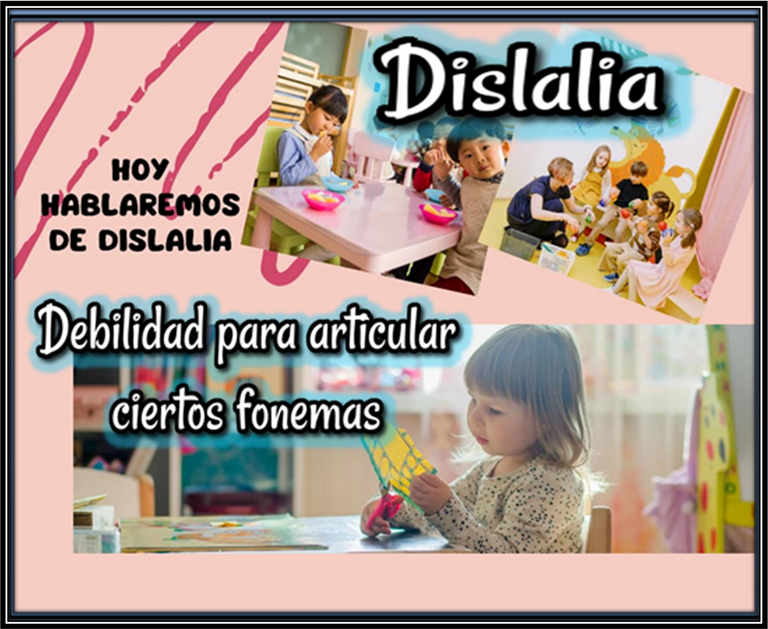


Hola mi gente creativa e innovadora, espero que se encuentren bien, rebosante de salud y repleto de energía positiva , en esta nueva entrega traigo para ustedes una información muy interesante con relación a la dislalia, considerada como un trastorno o debilidad en la articulación de uno o varios fonemas , es decir , dificultad para producir ciertos sonidos , es oportuno mencionar que la dislalia es un trastorno del lenguaje muy común durante la infancia, entre los síntomas podemos mencionar omisión, sustitución, adición o distorsión de sonidos dentro de una palabra.
Hello my creative and innovative people, I hope you are well, full of health and full of positive energy, in this new delivery I bring for you a very interesting information regarding dyslalia, considered as a disorder or weakness in the articulation of one or more phonemes, that is, difficulty in producing certain sounds, it is appropriate to mention that dyslalia is a very common language disorder during childhood, among the symptoms we can mention omission, substitution, addition or distortion of sounds within a word.
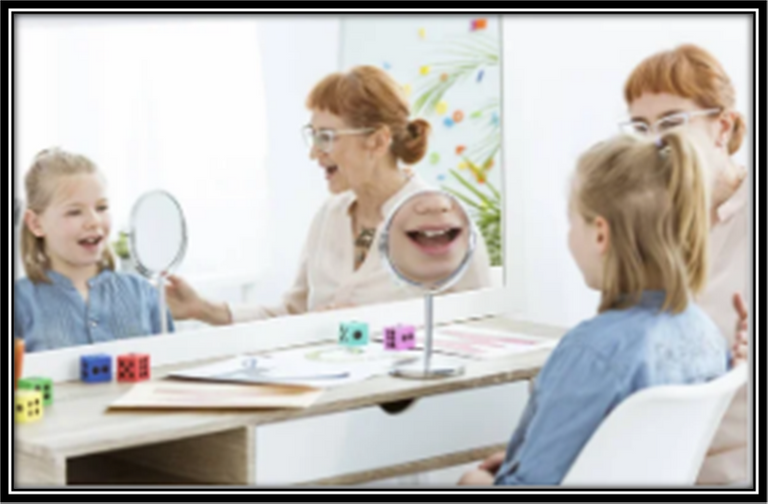

Atendiendo a estas consideraciones la dislalia se origina por alteraciones funcionales en los órganos periféricos del habla tales como: Labio, lengua, paladar, mejillas y dientes, entre las causas se puede hacer mención del retardo psicomotor que tiene que ver con debilidad en el tono muscular que resta fuerza a la mandíbula, lengua y el aparato fonador, los cuales intervienen en el habla, también se puede señalar la respiración a través de la boca, factores psicológicos por ejemplo inestabilidad familiar y emocional, debilidad en la discriminación auditiva por otitis o hipoacusia, factores ambientales, factores orgánicos tales como fisura palatina, labio leporino, frenillo lingual, paladar ojival, macroglosia, incorrecta oclusión dental, por otra parte es fundamental hacer mención de los hábitos inadecuados por ejemplo succión del pulgar o de chupón, dificultades masticatorias, alteraciones de la deglución, entre otros.
Attending to these considerations dyslalia is originated by functional alterations in the peripheral organs of speech such as: Lip, tongue, palate, cheeks and teeth, among the causes can be made mention of psychomotor retardation that has to do with weakness in muscle tone that subtracts strength to the jaw, tongue and the phonatory apparatus, which are involved in speech, you can also point out the breathing through the mouth, psychological factors such as family and emotional instability, weakness in auditory discrimination due to otitis or hypoacusis, environmental factors, organic factors such as cleft palate, cleft lip, lingual frenulum, ogival palate,macroglossia, incorrect dental occlusion, on the other hand it is essential to mention inadequate habits such as thumb or pacifier sucking, chewing difficulties, swallowing disorders, among others.

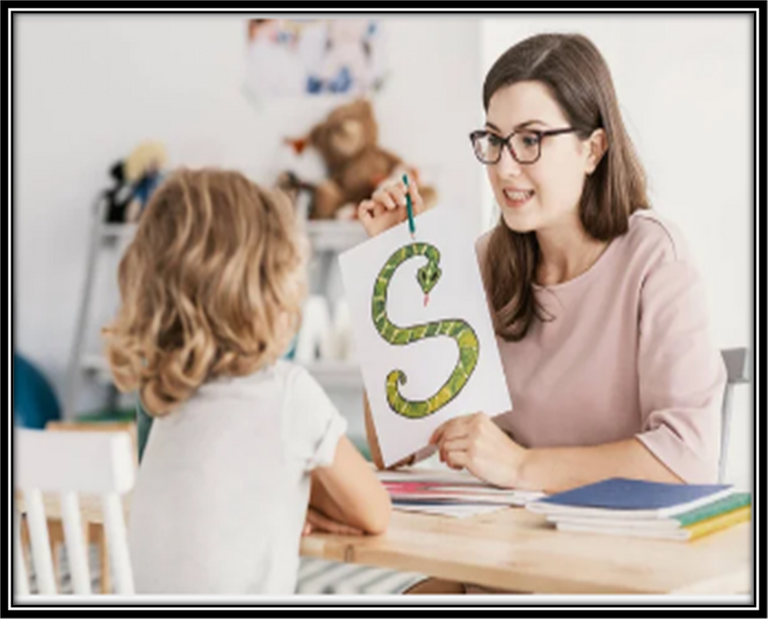
A este carácter se añade que existenn diferentes tipos de dislalia por ejemplo evolutiva, audiógenas , funcional, orgánicas y neurológicas:
Dislalia evolutiva también conocida como fisiológica es considerada como una alteración del habla debido a la inmadurez del sistema nervioso para producir los movimientos articulatorios, es completamente normal hasta los 4 años.
In addition, there are different types of dyslalia such as developmental, auditory, functional, organic and neurological:
Evolutionary dyslalia also known as physiological is considered as a speech disturbance due to the immaturity of the nervous system to produce articulatory movements, it is completely normal until the age of 4 years.
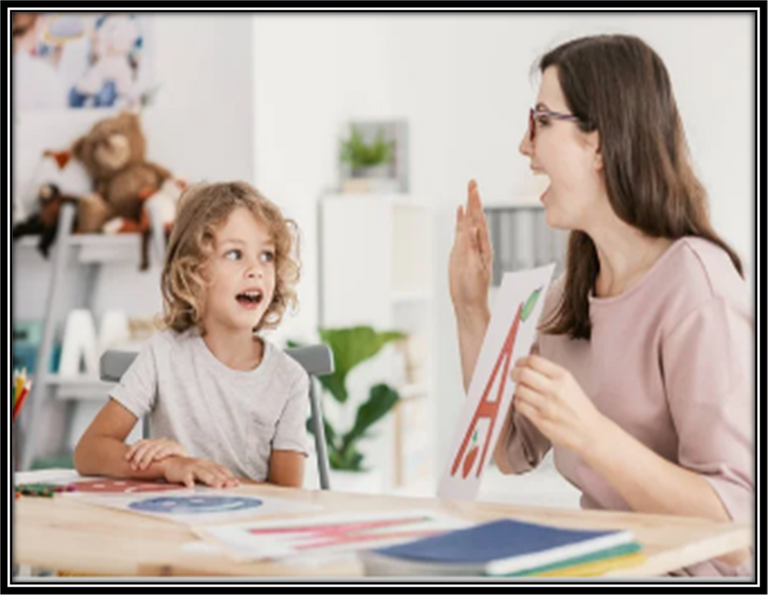

Dislalia audiógena está relacionada con las deficiencias auditivas, es decir , debilidad en la discriminación de sonidos que forman el habla, en este proceso la audición es pieza clave para poder hablar correctamente, en efecto si el niño o la niña no oye bien por ende tendrá debilidad en la articulación o pronunciación , en ocasiones la dislalia audiogena puede ir acompañada de alteraciones en la voz, lenguaje y ritmo
Auditory dyslalia is related to hearing impairments, i.e., weakness in the discrimination of sounds that form the speech, in this process hearing is key to be able to speak correctly, in fact if the child does not hear well therefore will have weakness in articulation or pronunciation, sometimes audiogenic dyslalia may be accompanied by changes in voice, language and rhythm.
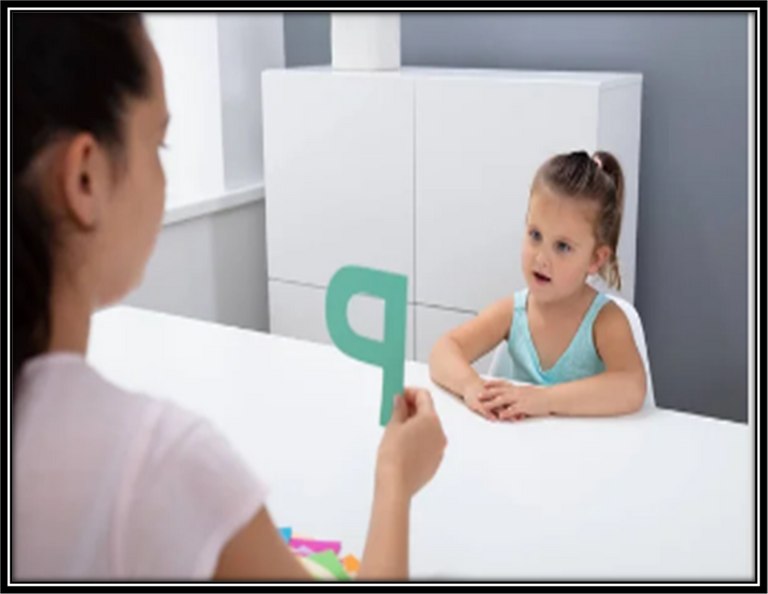

Dislalia funcional se produce por el inadecuado funcionamiento de los órganos que intervienen en la articulación, sin presentar causa orgánica, por ejemplo debilidad en la psicomotricidad , en la discriminación auditiva y poca estimulación lingüística.
Functional dyslalia is caused by inadequate functioning of the organs involved in articulation, without organic cause, for example, weakness in psychomotor skills, auditory discrimination and poor linguistic stimulation.
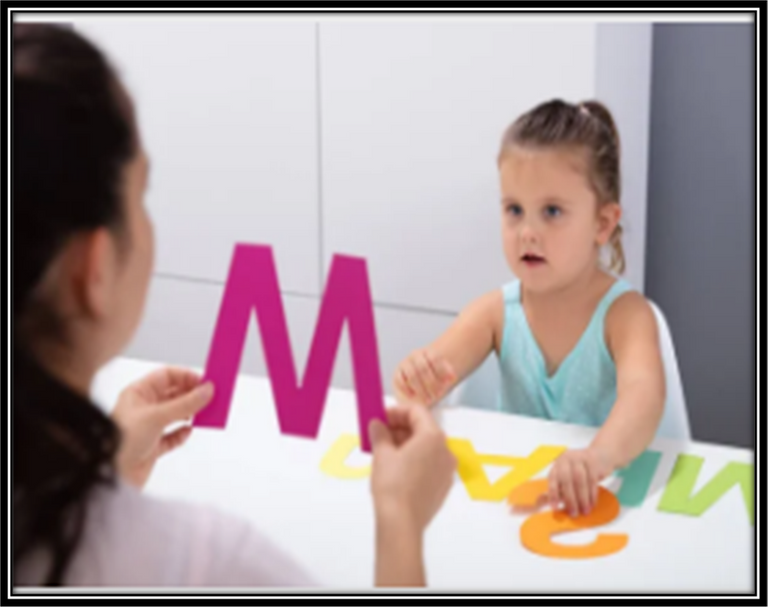

Dislalia orgánica conocida también como anatómica se debe a la inmadurez o malformación del aparato fonador, por ejemplo labio leporino , debilidad en la estructura ósea de los maxilares o frenillos lingual.
Organic dyslalia, also known as anatomical dyslalia, is due to immaturity or malformation of the vocal apparatus, e.g. cleft lip, weakness in the bone structure of the jaws or lingual frenulum.

Con relación el diagnóstico es necesario realizar una evaluación fono-articulatoria para conocer y distinguir el trastorno que presenta el niño mediante el lenguaje repetido, dirigido o espontáneo.
In relation to the diagnosis, it is necessary to perform a phono-articulatory evaluation to know and distinguish the disorder presented by the child through repeated, directed or spontaneous language.
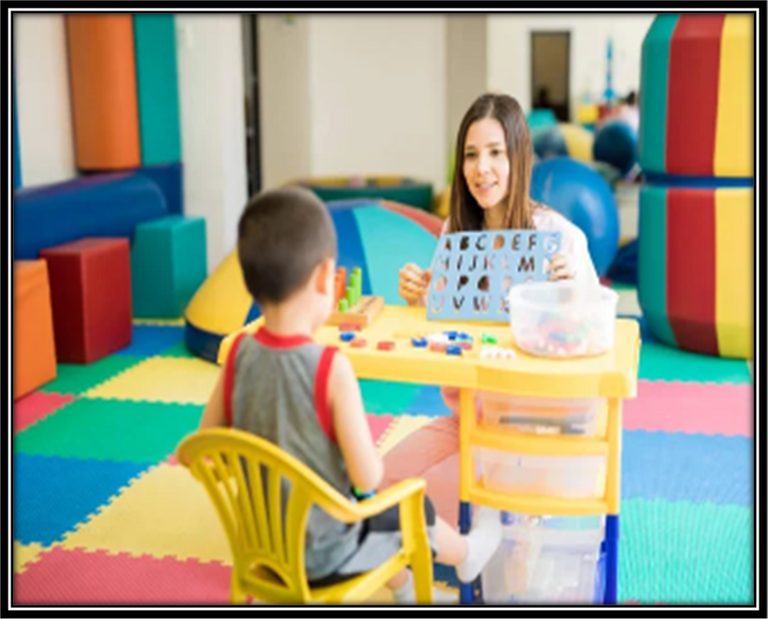

Por ejemplo durante lenguaje espontaneo es fundamental establecer una conversación con el estudiante con temas de su interés bajo un ambiente armónico, agradable donde se puede utilizar el juego como estrategia y en la medida de la conversación o de la actividad, ir anotando los fonemas que se le dificulte articular.
For example, during spontaneous language it is essential to establish a conversation with the student on topics of interest in a harmonious, pleasant environment where you can use the game as a strategy and, as the conversation or activity progresses, write down the phonemes that are difficult to articulate.

También se puede realizar intraverbales la cual es una evolución mediante el lenguaje dirigido donde se realizan diferentes preguntas cuyas respuesta lleven inmerso la articulación del fonema a evaluar.
It is also possible to perform intraverbal which is an evolution by means of directed language where different questions are asked, the answer to which involves the articulation of the phoneme to be evaluated.
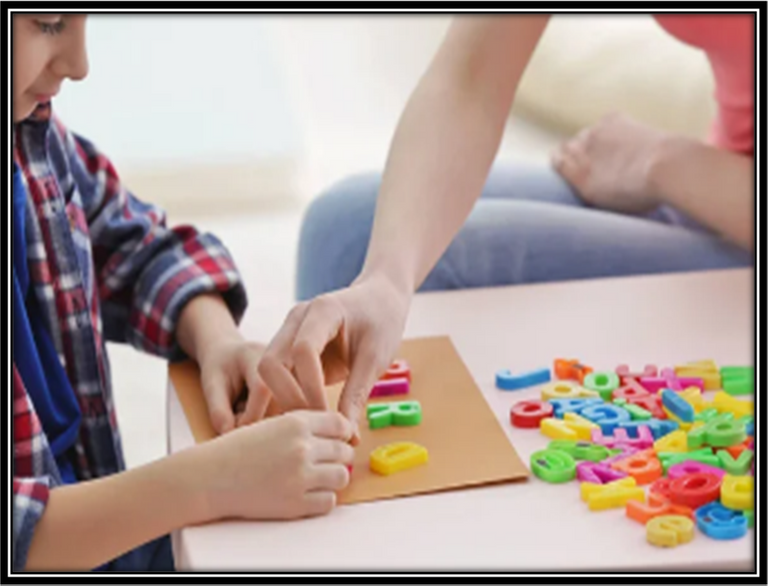

Entre las evoluciones podemos aplicar el lenguaje dirigido con referencia visual para el mismo utilizaremos: Fichas, imágenes o dibujos de objetos, animales, entre otros.
Among the evolutions we can apply the ** language directed with visual reference** for the same we will use: Tokens, images or drawings of objects, animals, among others.

Otra técnica es la imitación provocada que se realiza mediante el lenguaje repetido donde se utiliza una hoja de evaluación con palabras o frases sencillas de acuerdo a la edad cronológica del educando, donde se emite para que el niño o la niña repita dichas palabras y se registra el proceso de articulación.
Another technique is the provoked imitation which is performed through repeated language where an evaluation sheet is used with simple words or phrases according to the chronological age of the learner, where it is issued for the child to repeat these words and the articulation process is recorded.

Es primordial realizar junto a los niños actividades de discriminación auditiva mediante la identificación de sonidos y ruidos donde tendrán que señalar o mencionar la fuente sonora, con el fin de llegar a la discriminación auditiva de fonemas similares, dicha actividad debe tener integrada respuestas motoras, por ejemplo si se evalúa la discriminación de /r/ , se le puede solicitar al estudiante que al escuchar una palabra durante la actividad que lleve el fonema vibrante /r/, levante la mano y luego de tres palmadas , este es una forma dinámica de incentivar la discriminación de sonidos.
It is essential to perform with the children auditory discrimination activities by identifying sounds and noises where they will have to point or mention the sound source, in order to reach the auditory discrimination of similar phonemes, this activity should have integrated motor responses, for example if the discrimination of /r/ is evaluated, you can ask the student to hear a word during the activity that carries the vibrant phoneme /r/, raise your hand and then three claps, this is a dynamic way to encourage the discrimination of sounds.

Es importante resaltar el proceso de intervención el cual puede ser directo e indirecto donde se realizan diferentes ejercicios para mejorar la articulación, por ejemplo, en la intervención directa se toma en consideración la articulación del fonema a observar , la generalización en el lenguaje espontaneo mediante actividades de articulación, en cuanto a la intervención indirecta se toma en cuenta las bases funcionales de la articulación, por ejemplo, las habilidades motoras de órganos articulatorio, la audición y la respiración .
It is important to highlight the intervention process which can be direct and indirect where different exercises are performed to improve articulation, for example, in the direct intervention the articulation of the phoneme to be observed is taken into consideration, the generalization in spontaneous language through articulation activities, as for the indirect intervention the functional bases of articulation are taken into account, for example, motor skills of articulatory organs, hearing and breathing.

Dentro de la intervención indirecta se sugiere los siguientes ejercicios:
Ejercicios de respiración, de soplo, linguo-labiales, del velo del paladar, discriminación auditiva, en cuanto a la intervención directa se recomienda praxias, ejercicios de articulación del fonema aislado, de repetición de sílabas, repetición de palabras, repetición de frases, entre otros.
Within the indirect intervention the following exercises are suggested:
Breathing exercises, blowing exercises, linguo-labial, soft palate exercises, auditory discrimination, as for direct intervention praxias, isolated phoneme articulation exercises, repetition of syllables, repetition of words, repetition of phrases, among others are recommended.


Spanish
Entre las debilidades en la articulación de fonemas podemos mencionar:
Rotacismo: Debilidad para articular el fonema /r/.
Ceceo: Debilidad en la articulación o pronunciación de /s/ por /z/.
Seseo: Cuando se pronuncia la /z/ por /s/.
Sigmatismo: Debilidad en la articulación del fonema /s/.
Jotacismo: Dificultad en la articulación del fonema /x/.
Mitacismo: Inadecuada articulación del fonema /m/.
Lambdacismo: inconveniente en la articulación del fonema /l/.
Numación: Debilidad para articular el fonema /n/.
Nuñación: Dificultad en la articulación del fonema /ñ/.
Kappacismo: Incorrecta articulación del fonema /k/.
Gammacismo: Presenta inconveniente en la articulación del fonema /g/.
Ficismo: Debilidad en la articulación del fonema /f/.
Chuitismo: Presenta Inconveniente para articular del fonema /ch/.
Piscismo: Debilidad articulación del fonema /p/.
Tetacismo: inadecuada articulación del fonema /t/.
Yeismo: dificultad en la articulación del fonema /ll/.
Chionismo: sustitución de /rr/ por /l/.
Checheo: sustitución de /s/ por /ch/.
Gracias por apreciar mi contenido, hasta la próxima aventura, éxitos y bendiciones
English
Among the weaknesses in the articulation of phonemes we can mention:
Rotacism: Weakness in articulating the phoneme /r/.
Lisp: Weakness in the articulation or pronunciation of /s/ for /z/.
Seseo: When pronouncing /z/ for /s/.
Sigmatism: Weakness in the articulation of the phoneme /s/.
Jotacism: Difficulty in the articulation of the phoneme /x/.
Mitacism: Inadequate articulation of the phoneme /m/.
Lambdacism: Inadequate articulation of the phoneme /l/.
Numation: Weakness in articulating the phoneme /n/.
Nuñation: Difficulty in articulating the phoneme /ñ/.
Kappacism: Incorrect articulation of the phoneme /k/.
Gammacism: It presents inconvenience in the articulation of the phoneme /g/.
Ficism: Weakness in the articulation of the phoneme /f/.
Chuitismo: It presents inconvenience in the articulation of the phoneme /ch/.
Piscism: Weak articulation of the phoneme /p/.
Tetacism: Inadequate articulation of the phoneme /t/.
Yeism: difficulty in articulating the phoneme /ll/.
Chionism: substitution of /rr/ for /l/.
Checheo: substitution of /s/ for /ch/.
Thank you for appreciating my content, until the next adventure, success and blessings.


_
Imágenes de pixabay con su respectiva fuente
Texto traducido en deelp.
Conversor de letra 3D
Baner y separadores hecho en Canva y en Power Point
Estas recibiendo un voto por parte del proyecto "Sound Music" (@music1sound) y este post fue seleccionado para el reporte de curación diaria. Contáctenos para saber más del proyecto a nuestro servidor de Discord. Si desea delegar HP al proyecto: Delegue 5 HP - Delegue 10 HP - Delegue 20 HP - Delegue 30 HP - Delegue 50 HP - Delegue 100 HP.